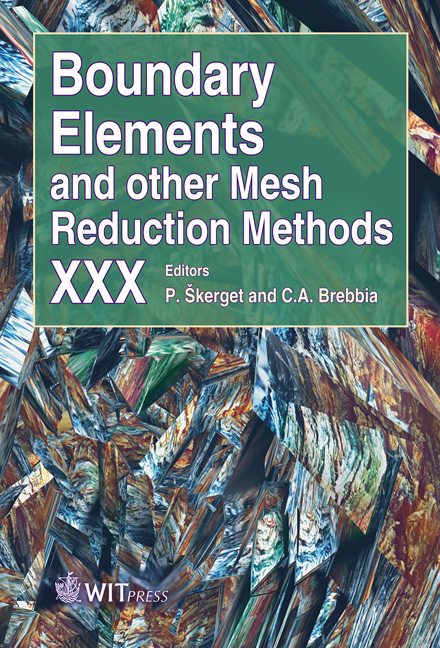A Multipole Based Boundary Element Method For Moving Boundary Problems In Axisymmetric Geometry
Price
Free (open access)
Transaction
Volume
47
Pages
10
Page Range
43 - 52
Published
2008
Size
450 kb
Paper DOI
10.2495/BE080051
Copyright
WIT Press
Author(s)
J. Singh, A. Glière & J.-L. Achard
Abstract
The Boundary Element Method (BEM) has been an effective method for modelling a number of particular problems which may be described by potential flows or, in a quite different vein, by creeping motions. However when it comes to moving boundary flows the BEM requires a significant amount of computational time. In the context of accelerating the BEM, the Fast Multipole Method (FMM) has been used for two and three-dimensional problems but they are not yet reported for axisymmetric ones. Our purpose is to present a multipole based boundary element method (MM-BEM) for moving boundary problems in the axisymmetric case. The proposed method takes advantage of grouping the ring sources in the axisymmetric domain, in order to reduce the amount of direct computations. Direct computations are only performed when the ring sources are located close to the evaluation point. Here, MM-BEM is implemented to simulate the impact of a drop onto a liquid surface, modelled assuming potential flow. It is shown that the proposed method provides the same results as the conventional BEM. Keywords: multipole expansion, multipole coefficient, Boundary Element Method, potential flow, axisymmetric problem, moving boundary. 1 Introduction A handful of practical applications characterized by moving boundaries can be modelled in axisymmetric environment, specifically the applications involving drops and bubbles [1–3]. The objective is to keep track of the moving boundary at different instants of time. The interest of the axisymmetric formulation lies in
Keywords
multipole expansion, multipole coefficient, Boundary Element Method, potential flow, axisymmetric problem, moving boundary.





